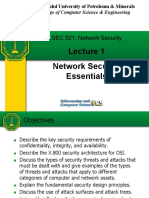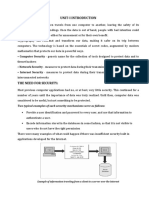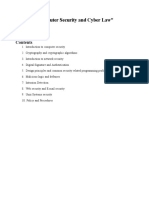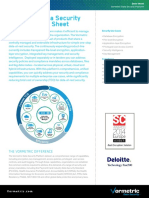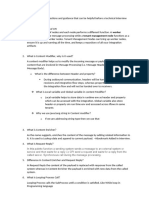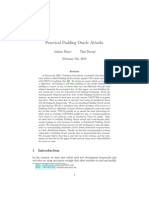0% found this document useful (0 votes)
34 views20 pagesNotes - Crypto Unit 1 - Vedant
The document provides an overview of cryptography, cryptanalysis, and cryptology, detailing their definitions, purposes, and processes. It also explains key concepts such as data confidentiality, integrity, and availability, along with security principles and ethical and legal issues in security systems. Additionally, it discusses various security threats, cyber threats, and specific encryption techniques like the Caesar Cipher and Rail Fence Transposition, including examples and explanations of passive and active attacks.
Uploaded by
sksamyakkalaskar2004Copyright
© © All Rights Reserved
We take content rights seriously. If you suspect this is your content, claim it here.
Available Formats
Download as PDF, TXT or read online on Scribd
0% found this document useful (0 votes)
34 views20 pagesNotes - Crypto Unit 1 - Vedant
The document provides an overview of cryptography, cryptanalysis, and cryptology, detailing their definitions, purposes, and processes. It also explains key concepts such as data confidentiality, integrity, and availability, along with security principles and ethical and legal issues in security systems. Additionally, it discusses various security threats, cyber threats, and specific encryption techniques like the Caesar Cipher and Rail Fence Transposition, including examples and explanations of passive and active attacks.
Uploaded by
sksamyakkalaskar2004Copyright
© © All Rights Reserved
We take content rights seriously. If you suspect this is your content, claim it here.
Available Formats
Download as PDF, TXT or read online on Scribd
/ 20











